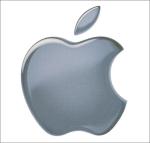 After Steve Job’s death, I posted a few times about where Apple heads next with innovation. Many people have asked the same questions. With the introduction of the iPhone 6 and the Apple Watch (aka iWatch), we are beginning to get a clearer view.
After Steve Job’s death, I posted a few times about where Apple heads next with innovation. Many people have asked the same questions. With the introduction of the iPhone 6 and the Apple Watch (aka iWatch), we are beginning to get a clearer view.
Some have suggested that Apple may be losing its “cool” factor. Perhaps, but given the record long lines at Apple Stores last Friday to be “first” to buy an iPhone 6, that suggestion is premature.
I noted in an earlier post that the innovation issue for Apple was going to be the need to change its innovation archetype, and that was risky. Since the beginning, Apple has used the Visionary Leader innovation archetype. Due to Steve’s untimely death, I felt they were likely to no longer be able to follow that approach. Indications are that they are not even trying and have moved to the most common archetype, Systematic Innovation. This is not really a surprise since shifting from Visionary Leader to Marketplace of Ideas is a huge shift and Collaborative Innovation is also way outside their culture. The Systematic archetype seems the most logical.
We see indications of that also in the number of innovations Apple is now working on. When Jobs returned to Apple after his Next adventure, he famously reduced the projects from hundreds to a handful. Indications are that Apple is now working on dozens (at least). Pundits suggest that Apple needs to do so because they cannot move the needle anymore with a simple $1B innovation. They need many of those. Or a $50B innovation as Jobs was more inclined to look towards.
Anyway, as I have said previously, Apple has its challenges ahead and only time will tell if it can make the transition. The bar is very high, but then so is their cash on hand.
Mitch




Good post, Mitchell.
I would like to point out that cash at hand has nothing to do with innovation. Neither do long lines of people wanting to buy the iPhone 6. Those are a reflection of existing brand loyalty.
After all, the iPhone 6 has no innovation over, say the Lumia 1520, which has had a large screen, better camera with optical stabilization and many other features. Which is really pathetic for what is considered the most innovative company in the World.
There is a lag between innovation and market success, measured in years, as proved by the story of the iPhone itself (read http://theadaptivemarketer.com/2012/05/20/the-unknown-story-behind-the-iphone/ ). Similarly, there is a lag between the time innovation stops at a company and when customers stop buying their products, cash reserves are used up to buy innovation (Beats audio?) and the company becomes a follower.
Well stated. And cash on hand will allow them to last a long time as the lag between lack of new innovations and those results can also be long when there is lots of cash to pay the bills.